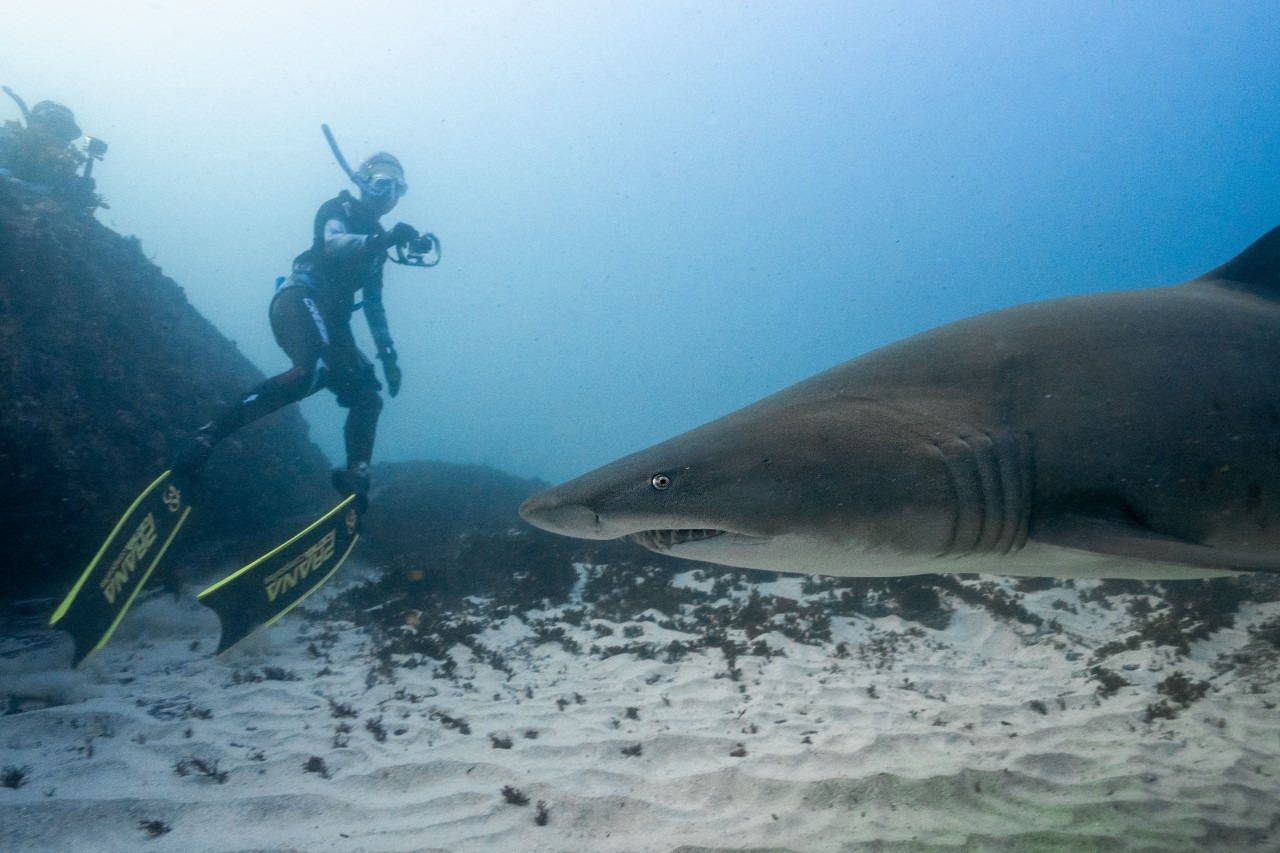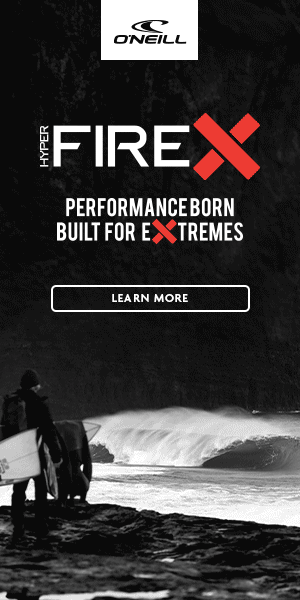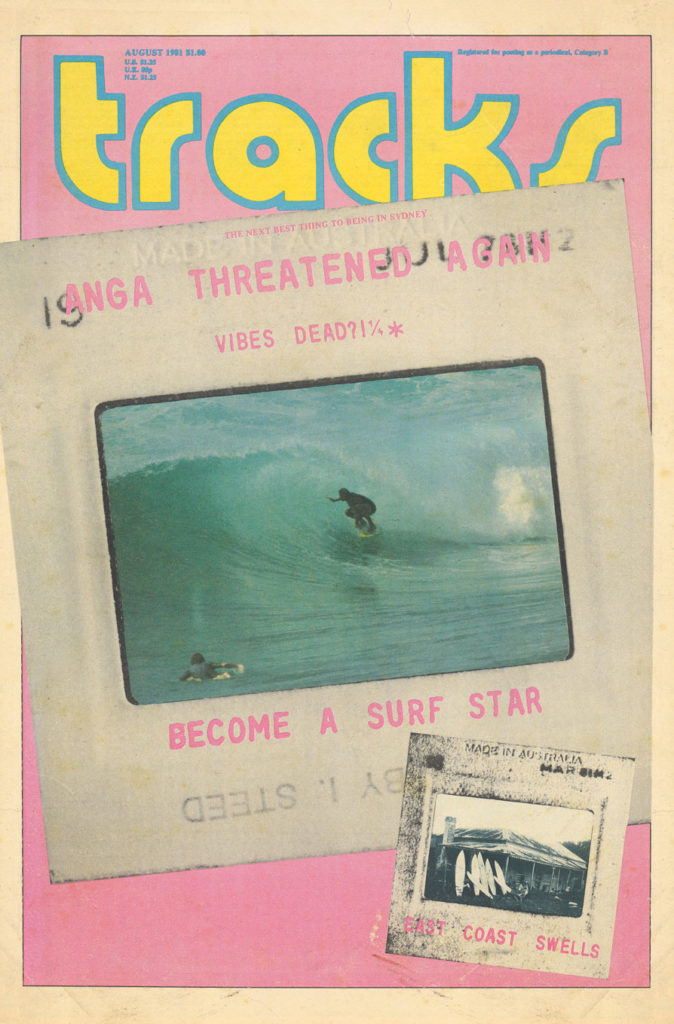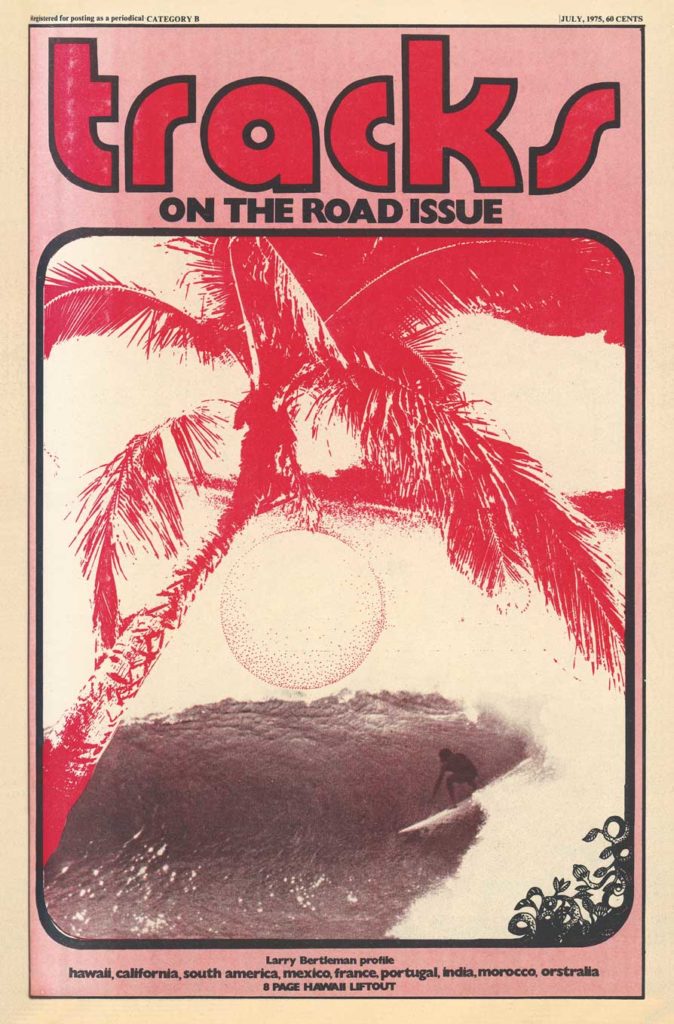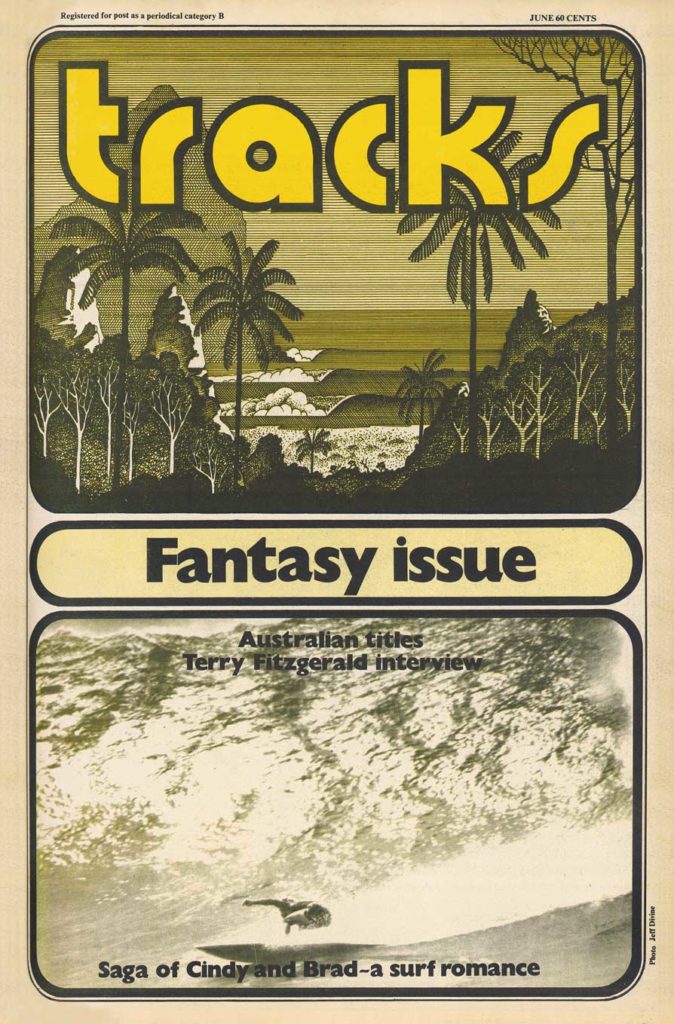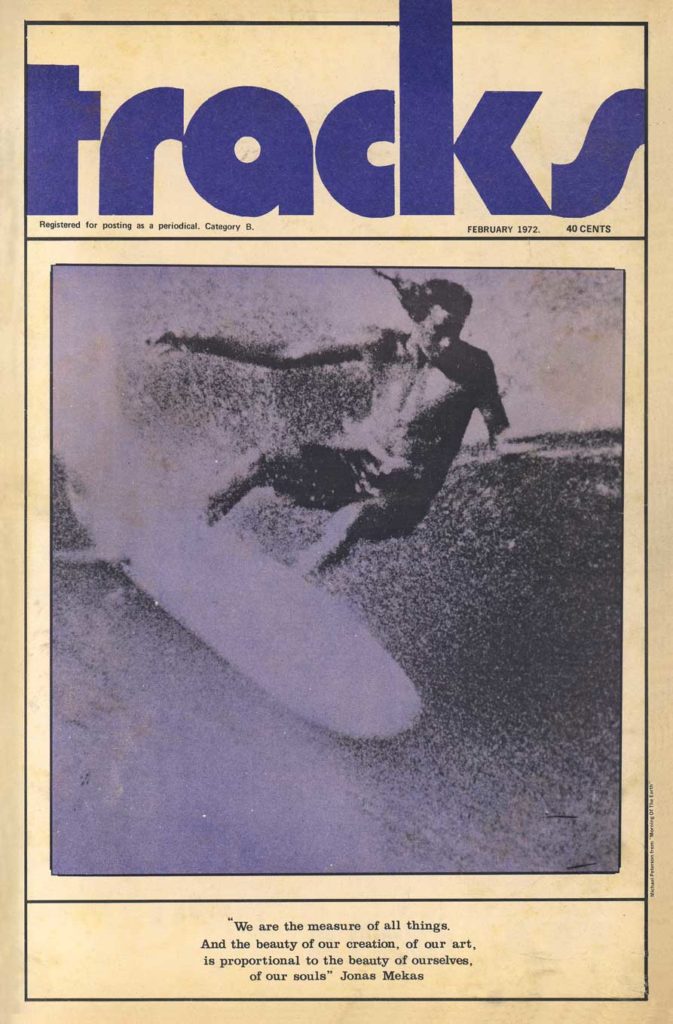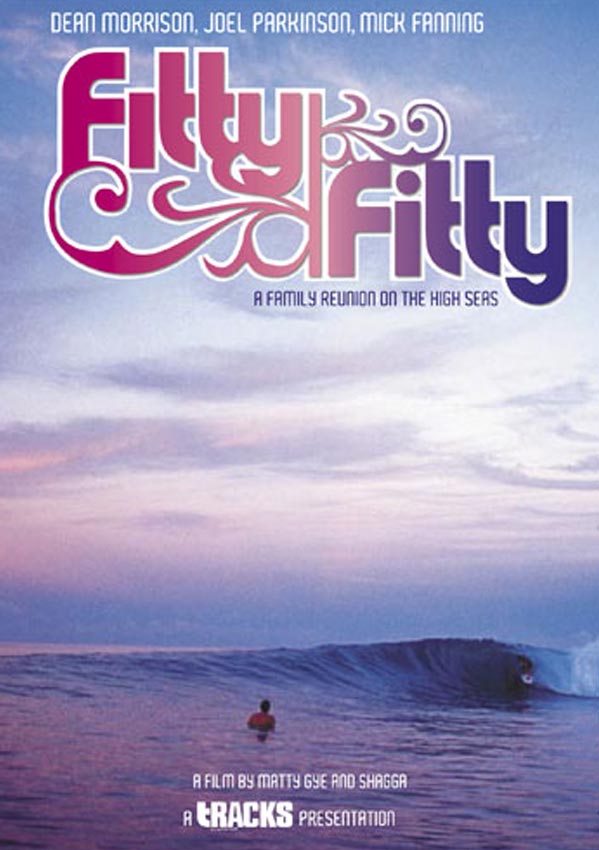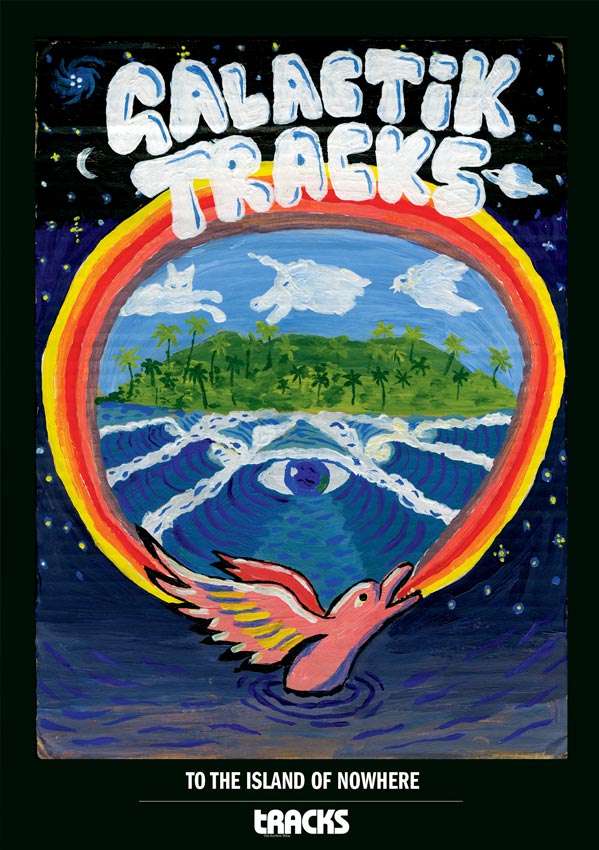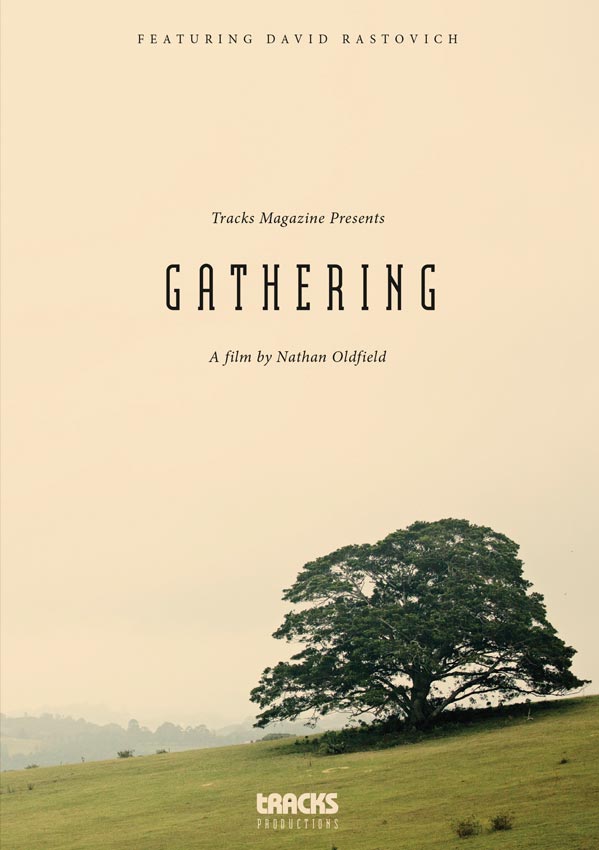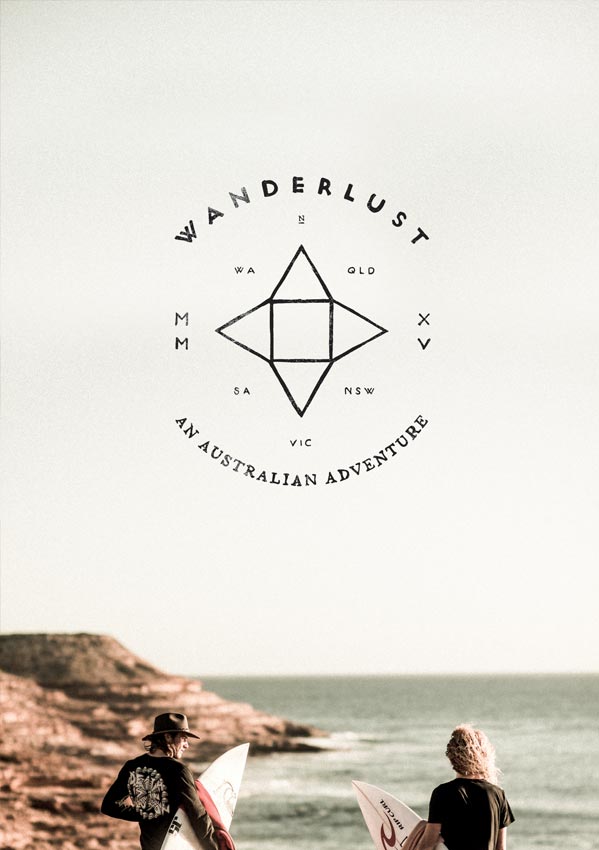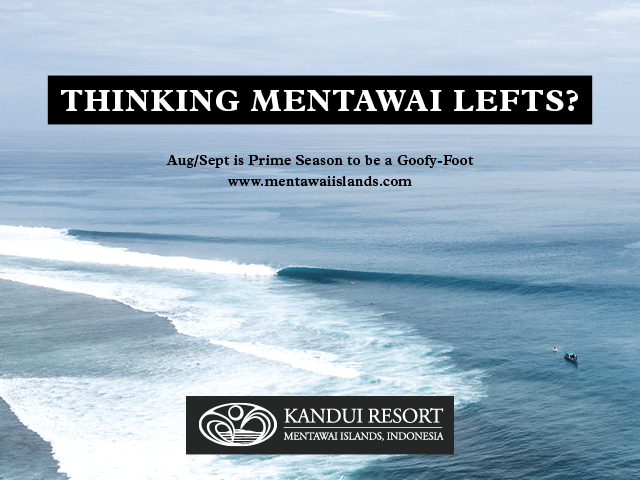Today is National Shark Day. While we may be reluctant to call it a day for celebration, it’s certainly a good opportunity to promote a better understanding of the creatures surfers fear and respect. Duncan Heuer is a surfer, diver and underwater photographer living in Bondi. He is also the president of NSW Underwater Research Group. Below he writes about the plight of the Grey Nurse and showcases some of the images and footage he has captured of an often misunderstood species of shark. Read and watch, and make up your own mind.
Sharks receive a huge amount of negative attention in the media, yet we know that without sharks the marine ecosystem would collapse. Shark awareness day held annually on the 14th July, is an initiative to demystify these apex creatures, dispel the myths, and draw attention to the important role they play in the oceans.
Having grown up surfing the East Coast of South Africa and now living in Sydney, I have had first-hand experiences which are both negative and positive. I personally know seven surfers who were bitten and unfortunately, one of them was fatally injured. I’ve also spent significant time in Australia and around the world diving and photographing sharks and I have seen another side to them. I have also spent the last few years photographing a resident population of grey nurse sharks (Carcharias taurus) in Bondi. Since they have recently been the subject of a number of sightings locally, it is their story that I want to share with you today.
A video filmed on the 13th June 2021 showing a healthy population of resident grey nurse sharks (Carcharias taurus) while freediving.
Grey nurse sharks are an exhilarating shark to encounter. They frequent our shallow coastal waters, grow to just over three meters, and have protruding ragged teeth which gives them a fierce look. During the 1950’s and 1960’s this look contributed to the view that they were a man-hunting species and this led to intensive fishing efforts by spearfishers using explosive-headed spears. New South Wales Fisheries estimated that their numbers were as low as sub-300 individuals when they became the first shark in the world to receive protected status in 1984.
Another contributing factor to their decline was the shark nets deployed up and down the NSW coast. Contrary to popular belief, these shark nets do not create a barrier for sharks entering beaches. They are deployed only during the summer months due to the amount of migrating whales they entangle in the winter months. They also only cover 150m-180m of the beach. In Bondi these are positioned about 600 meters off the beach where the water is about 18m deep. However, the nets are only 6m deep and sit under the surface at about 4m so they don’t get caught in boat engines. Sharks can swim under, over, and around them. In NSW the nets were first deployed in 1937 and are designed, according to the government website, to “reduce the chances of shark encounters.” What this in effect means is they were designed to entangle and kill sharks thereby reduce the number of sharks along the coast. According to DPI the number of sharks caught in the first year of the program was roughly 1000. Since then the annual number of sharks caught has been in a steady decline and now the numbers are barely double digits. So sadly, they have been effective at reducing the number of shark encounters, but not by creating a barrier, but instead by reducing the number of sharks in the ocean. Sharks are not the only casualty in this. Last year DPI recorded 430 other creatures (rays, turtles, dolphins) caught in NSW nets. Sharks accounted for less than 10% of that number. Incidentally, 34 shark bites have occured in NSW on netted beaches.
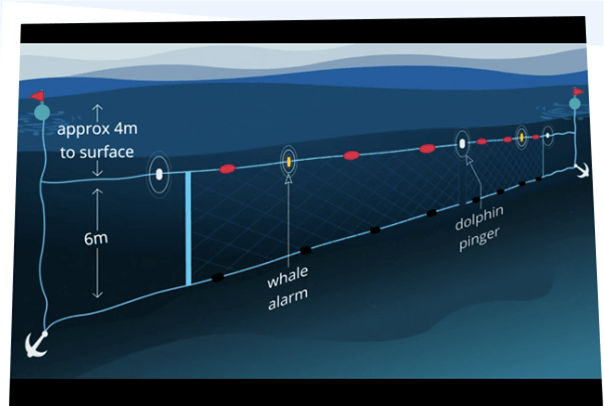
Source: Dept of Primary Industries
https://www.sharksmart.nsw.gov.au/shark-nets
https://www.dpi.nsw.gov.au/__data/assets/pdf_file/0003/636537/FR24-shark-meshing.pdf
We now know that grey nurse sharks are docile and do not pose a risk to swimmers or surfers. Their hooked teeth are designed for grabbing prey to swallow virtually whole, so they are unlikely to attempt to grab anything human-sized. In the very rare event that this has happened, and it did to my housemate in South Africa, Orrin Johnson, who jumped off his board after catching a wave and landed on one, the injuries aren’t life-threatening. Grey nurse sharks do not have the ability to bite the same way great whites, tiger and bull sharks do. The latter whose teeth are serrated and designed to remove pieces of meat from larger animals. Grey nurse teeth are similar to wobbegong shark teeth, who happen to account for a substantial number of the bites along our coastline.
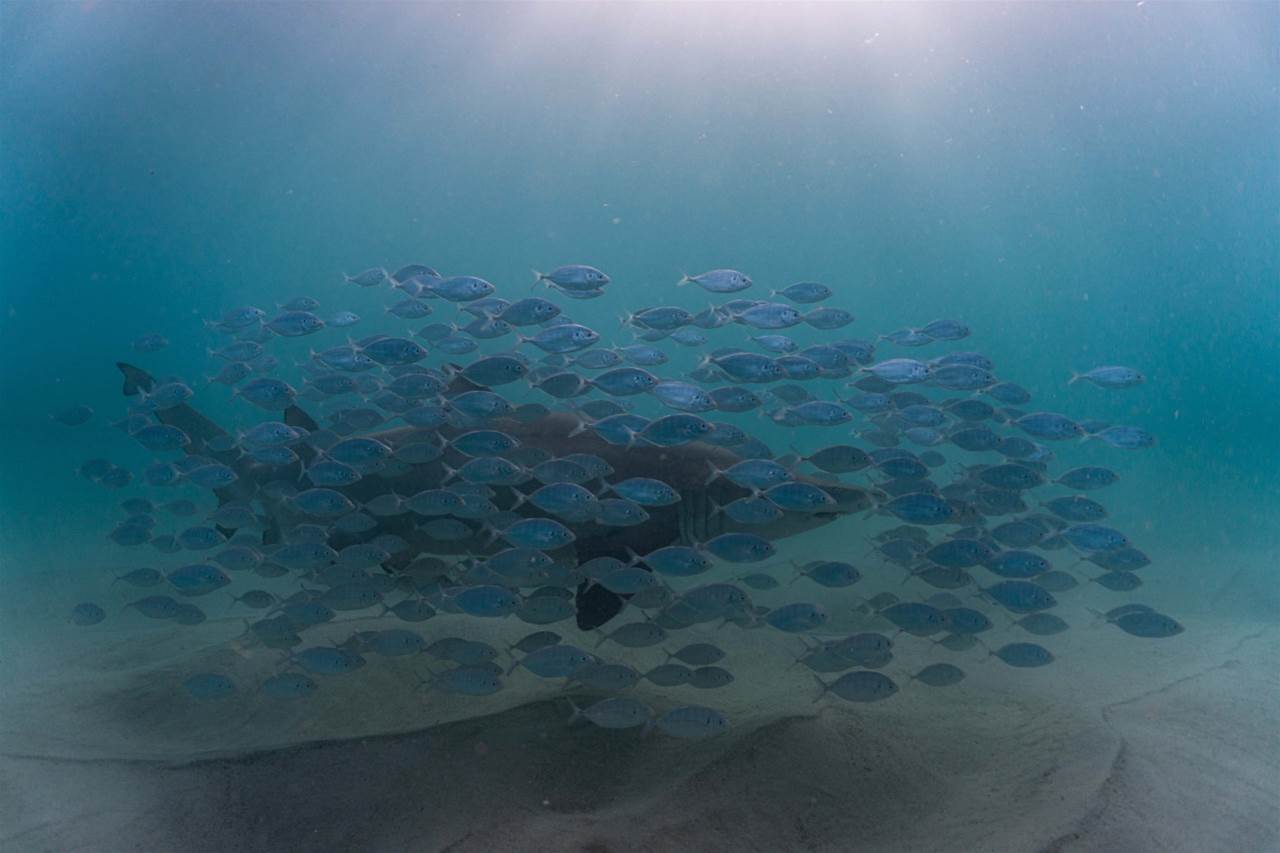
Over the last year we have enjoyed a 100% success rate locating and filming grey nurse sharks in Bondi. Early this month we encountered an astonishing nine individuals while freediving on the southern end of Bondi behind the famous Bondi Icebergs Club. While setting up a tripod to limit the interruption associated with filming them, I have come shoulder to shoulder with inquisitive sharks. I have even had them swim into my handheld camera on occasion. Sometimes they move away gracefully and sometimes they get such a fright that their swift departure is accompanied by an audible crack of their tail.
Thankfully after 40 years of protection estimates suggest that the east coast population of grey nurse sharks has increased and is now around 2000 individuals. They are one of the slowest breeding sharks due to their bizarre breeding habits. They are ovoviviparous, meaning the young hatch inside the womb. They then eat each other and only one per ovary is born. Females only breed every 2 years and have a 12 month gestation period.
Early this year the eastern suburbs council, along with the northern beaches and Newcastle council voted to have the shark nets removed, but the decision remains with the state government who are unwilling to consider it. It could be assumed this decision is partly because the public think they are an effective barrier and broader understanding of the harm they do is required before regulation catches up.
Resources of interest:
The Shark Net Film. Holly Richmond, a researcher from the Gold Coast made a documentary about the QLD beach nets and it is free to watch.
THE SHARK NET FILM…Gold Coast from The Shark Net Film on Vimeo.
Envoy: Shark Cull, featuring multiple world surfing champ Layne Beachley who has become a vocal opponent to the shark nets. It is about to start doing the rounds in Australian and international cinemas. It highlights the issues with this program in NSW.

